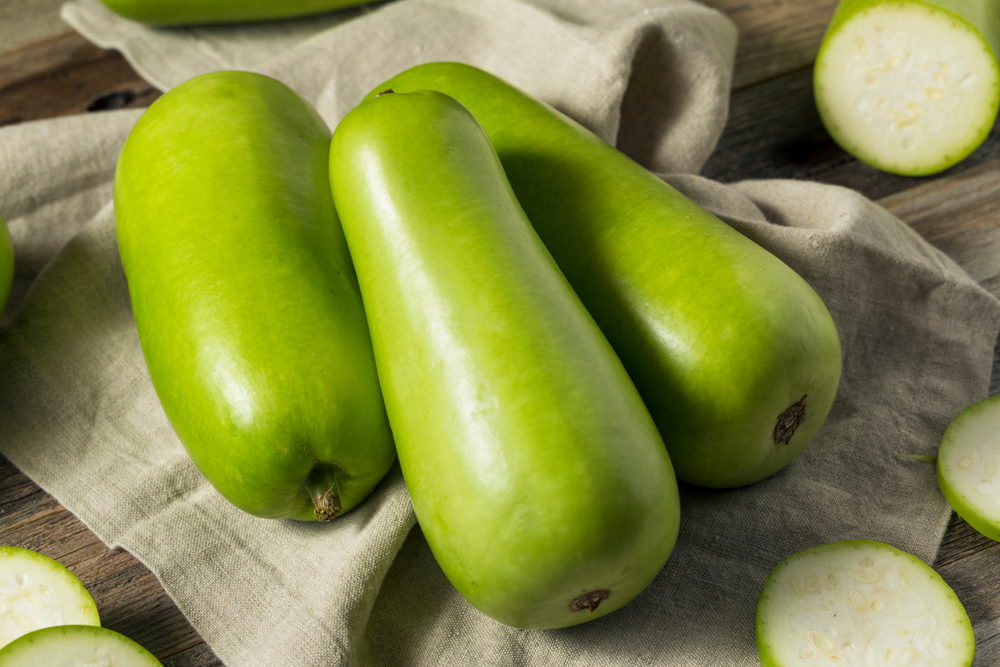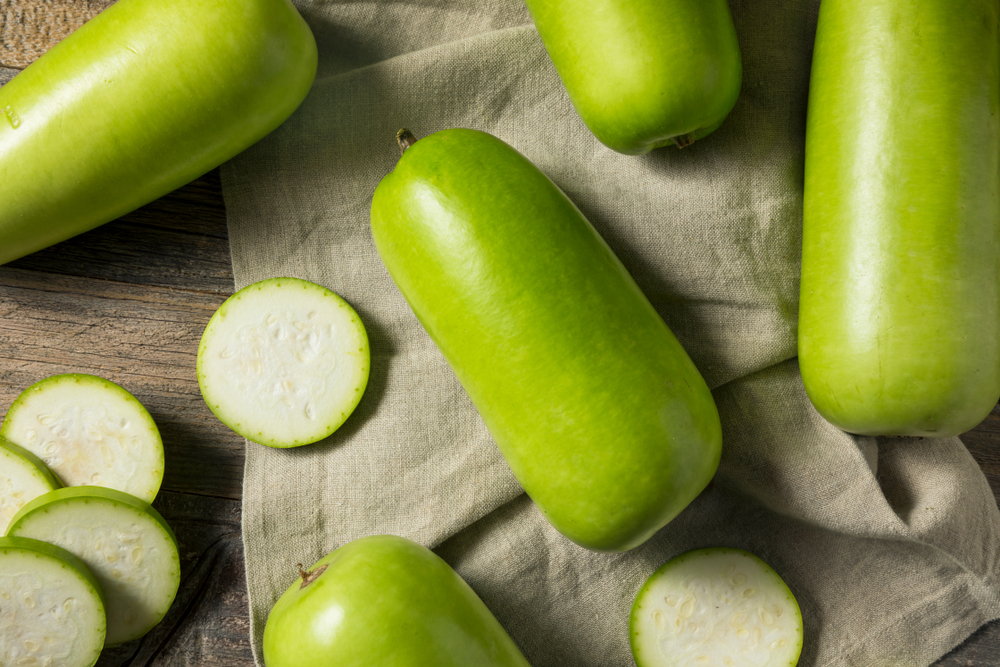Are you growing a vegetable garden but tired of the usual zucchini, tomatoes, and eggplants? Then, consider planting an opo squash. Also known as bottle gourd, this plant produces bottle-like squashes that are usually between 10 and 15 inches long. But how do you grow such a vegetable in your garden?
You have landed in the right place to find out! Keep reading this essential guide to learning everything you must know about Opo Squash before adding it to your yard!

| Botanical Name | Lagenaria siceraria |
| Common Name | Opo Squash, Long Squash, or Bottle Gourd |
| Plant Type | Annual |
| Flower Color | This plant is self-pollinating and produces both female and male flowers on its plant. The blooms are tiny and usually white or yellow. |
| Size When Mature | The plant may spread up to 10 feet and grow 18 inches high. |
| Bloom Time | Summer |
| Sun Requirements | Full Sun |
| USDA Hardiness Zones | 5-9 |
| Soil PH Range | Between 6.0 and 7.0 |
| Soil Type | Well-draining, rich, and loamy |
| Water Needs | Medium |
| Native Area | Southeast Asia |
What you Need to Know About Opo Squash
Opo Squash is a self-pollinating vegetable with a climbing growth habit. Ensure you provide a trellis (or any other kind of support) to allow it to grow vertically. Otherwise, your plant might suffer.
The fruits have a bottle-neck shape that gives opo squash the name “bottle gourd.” This squash has a mild taste, similar to zucchini, and almost identical nutritional value.
Under ideal growing conditions, this plant is a prolific producer. But jump to the following sections to learn how to make the most from this vegetable.
How to Care for Opo Squash
Despite what you may think, growing opo squash in your garden isn’t too challenging. Provided that you fulfill its requirements for sunlight, watering, temperature, and nutrition, you shouldn’t encounter too many issues with this plant.
Light
You’ll get more harvests by planting your opo squash under the full sun. Of course, this plant performs better outdoors. However, if you live in a cold region, you can always try growing it in a greenhouse.
If you don’t have space in your garden, consider planting it in a pot: it must be at least twice the size of the plant’s rootball to allow it to thrive. Don’t forget to give it a trellis, or your plant might not get the airflow it needs to produce fruits.
Water and Soil Needs
The best type of soil for growing opo squash is a fertile substrate. Consider adding plenty of organic material to the ground: compost, manure, sphagnum peat, and leaf mold are all excellent options. Indeed, besides improving the nutrient content, they also contribute to optimizing drainage and water retention.
The pH levels aren’t too much of a concern. However, you may get better results by planting your squash in slightly acidic to neutral soil. Don’t forget to water your plants when they feel dry: if you live in a warm region, you may have to increase the watering frequency during the summer.
Temperature Requirements
These plants do better in warmer climates. So, avoid exposing them to temperatures below 55°F, or they won’t germinate (or produce flowers). But with adequate protection from cold winds and low temperatures, you should be able to grow this plant anywhere between USDA hardiness zones 5 and 9.
Fertilizer
While fertilizing isn’t necessary, it will help you boost harvests. Use balanced products to give your plants the nutrients they need to thrive. Follow the instructions on the product label to avoid doing more harm than good to your plant.
Phosphorous encourages fruiting, while potassium strengthens your plant, so pick a product that contains both. Nitrogen and magnesium are also crucial elements to a bottle ground’s growth.
Common Diseases
One of the best things about opo squash is that it is a hardy plant that rarely suffers from diseases or attacks from pests. However, that doesn’t make it immune to issues.
If you notice harmful bugs on your plant, take immediate action to remove them. We advise you to start with organic solutions to minimize harm to your plants (and beneficial pollinators). Also, consider practicing crop rotation to prevent infestations!
Also, ensure you train your plants to grow around trellises and keep tying your squash’s vines as they grow. Doing so will not only make your plant tidier, but it will also ensure better airflow and exposure to the sunlight. In turn, this will make your vegetables less susceptible to diseases. Squash leaves turning yellow can indicate under or over watering or a fungal infection.

